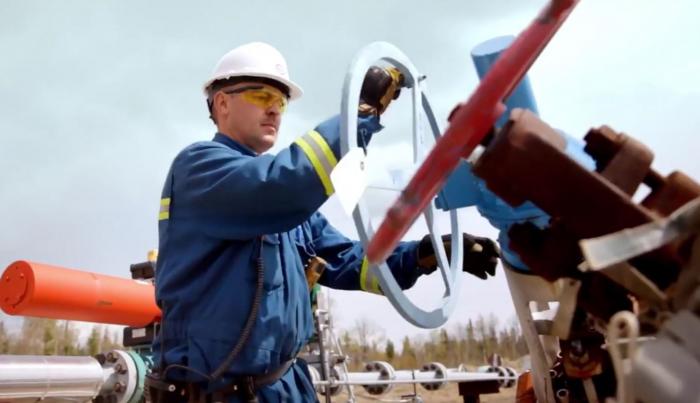The Importance of Compliant Pipe Rack Catwalks

And How Portability and Strength Can Work Together
With the Canadian oil, gas and resources industries readjusting their operations over the last few years, it has become even more important to ensure that their worksites—in the field or at the refinery—are set up for heightened efficiency.
Besides shifting skillsets around employees and focusing on new technology, a rebirth of sorts for renewed productivity also relies on the safety aspects of worksites. After all, an injured worker means downtime that costs the company money. The environments in which a resources worker operates can be fraught with danger – open pits, significant open-air heights and awkward navigation of infrastructure like pipe racks, flare stacks and other infrastructure.
According to CCOHS, 42,000 Canadian workers get injured annually due to fall accidents. And to further compact this misfortune, many of the falls that occur in oil and gas result in serious injuries and even death.
When you see the type of pipe infrastructure present at a refinery or oil field, it is easy to understand how accidents happen. The pipes are of course long, so going around them isn’t an option. And the arc-shaped surface, combined with water or ice, makes for an almost imminent slip.
Access and egress over these pipes is also necessary for access to valves and stud bolts during maintenance programs; or, a worker simply needs to reach the other side quickly. Many companies—rather than using step ladders or makeshift platforms—are investing in an assessment of worksite pedestrian traffic, and installing permanent customised steps and bridging systems.
This type of installation used to involve steel fabrication, but many operators are choosing suppliers who use weatherproof aluminum for its strength and flexibility for design. Steel is more costly, due to the need for coating it to resist the weather. Field fabrication is also the most expensive form of manufacturing.
Formerly thought of as a temporary lightweight solution, companies like Saskatchewan’s SafeSmart Access are putting aluminum at the core of their custom offering.
SafeSmart’s Tom Biggs offers his thoughts on what they can offer oil and gas clients through the use of aluminum. “It’s been around a long time,” says Tom, “but we are gaining momentum in the resources sector for height access because our designs marry durability, customization and cost efficiency. We have already made worksites more efficient and safe with the supply of our engineered products, such as stepover platforms and hand-steerable platforms.”
But what sets SafeSmart’s platforms above other options is that they are engineered for temporary use; they are easily relocated as opposed to fixed platforms.
These products are not just benefitting companies directly; they are also doing the important job of making their sites compliant. The Canadian Government’s Oil and Gas Occupational Safety and Health Regulations (SOR/87-612) state the need for measures such as:
- “Where an employee in the course of employment is required to move from one level to another level that is more than 450 mm higher or lower than the former level, the employer shall install a fixed ladder, stairway or ramp between the levels.”
- “Where one end of a stairway is so close to a traffic route used by vehicles, to a machine or to any other hazard as to be hazardous to the safety of an employee using the stairway, the employer shall (a) where practicable, install a barricade that will protect employees using the stairway from the hazard; or (b) where it is not reasonably practicable to install a barricade, post a sign at that end of the stairway to warn employees of the hazard.
- (2) Every guardrail shall be designed to withstand the greater of (a) the maximum load that is likely to be imposed on it; and (b) a static load of not less than 890 N applied in any direction at any point on the top rail or line.” The rest can be read here. It is this set of regulations that should inform, if not dictate, the design of pipe rack walkways and the like. Companies like SafeSmart Access have an intimate knowledge of height access compliance laws.
The rest can be read here. It is this set of regulations that should inform, if not dictate, the design of pipe rack walkways and the like. Companies like SafeSmart Access have an intimate knowledge of height access compliance laws.”





